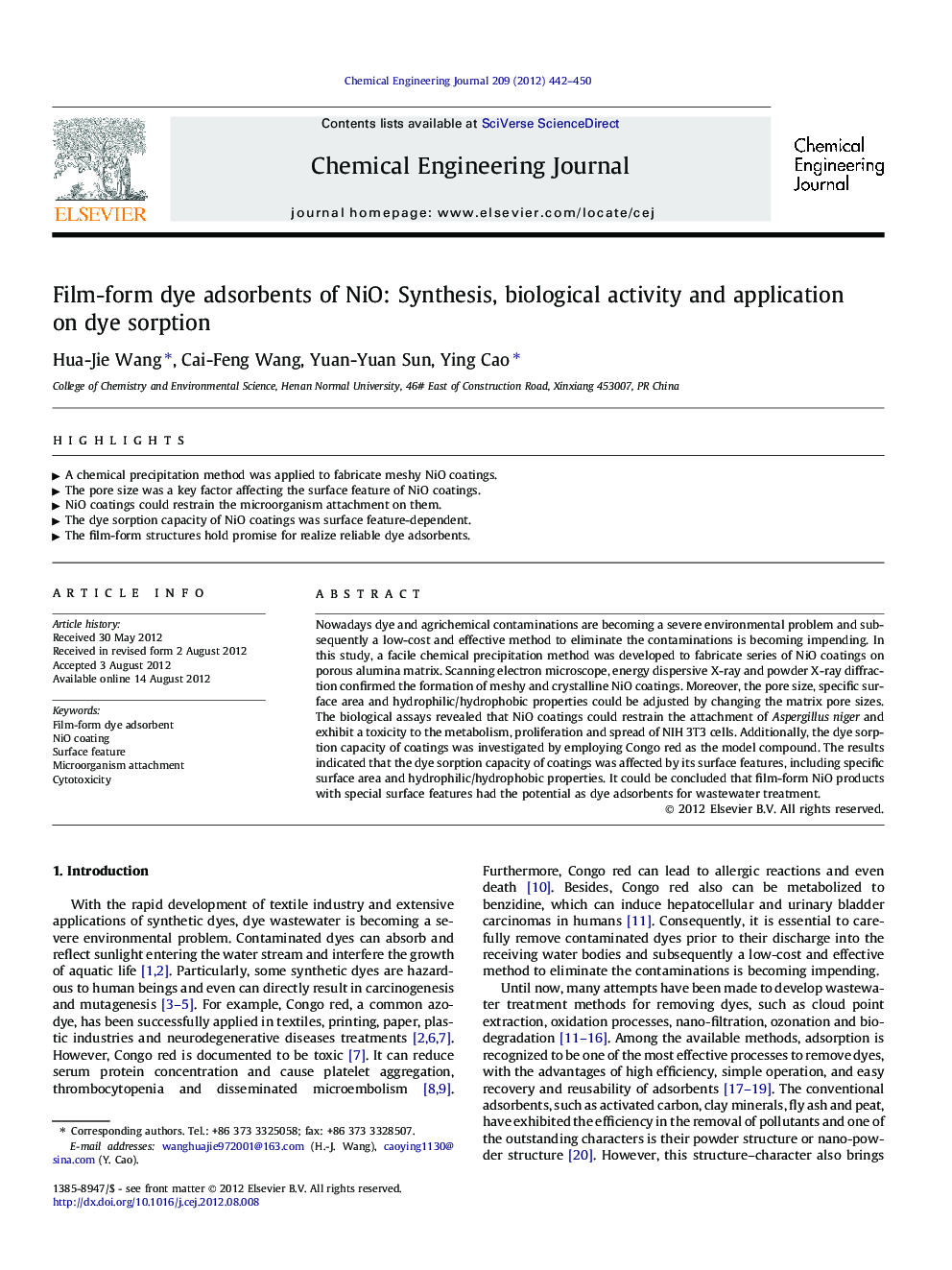| کد مقاله | کد نشریه | سال انتشار | مقاله انگلیسی | نسخه تمام متن |
|---|---|---|---|---|
| 149219 | 456429 | 2012 | 9 صفحه PDF | دانلود رایگان |

Nowadays dye and agrichemical contaminations are becoming a severe environmental problem and subsequently a low-cost and effective method to eliminate the contaminations is becoming impending. In this study, a facile chemical precipitation method was developed to fabricate series of NiO coatings on porous alumina matrix. Scanning electron microscope, energy dispersive X-ray and powder X-ray diffraction confirmed the formation of meshy and crystalline NiO coatings. Moreover, the pore size, specific surface area and hydrophilic/hydrophobic properties could be adjusted by changing the matrix pore sizes. The biological assays revealed that NiO coatings could restrain the attachment of Aspergillus niger and exhibit a toxicity to the metabolism, proliferation and spread of NIH 3T3 cells. Additionally, the dye sorption capacity of coatings was investigated by employing Congo red as the model compound. The results indicated that the dye sorption capacity of coatings was affected by its surface features, including specific surface area and hydrophilic/hydrophobic properties. It could be concluded that film-form NiO products with special surface features had the potential as dye adsorbents for wastewater treatment.
► A chemical precipitation method was applied to fabricate meshy NiO coatings.
► The pore size was a key factor affecting the surface feature of NiO coatings.
► NiO coatings could restrain the microorganism attachment on them.
► The dye sorption capacity of NiO coatings was surface feature-dependent.
► The film-form structures hold promise for realize reliable dye adsorbents.
Journal: Chemical Engineering Journal - Volume 209, 15 October 2012, Pages 442–450